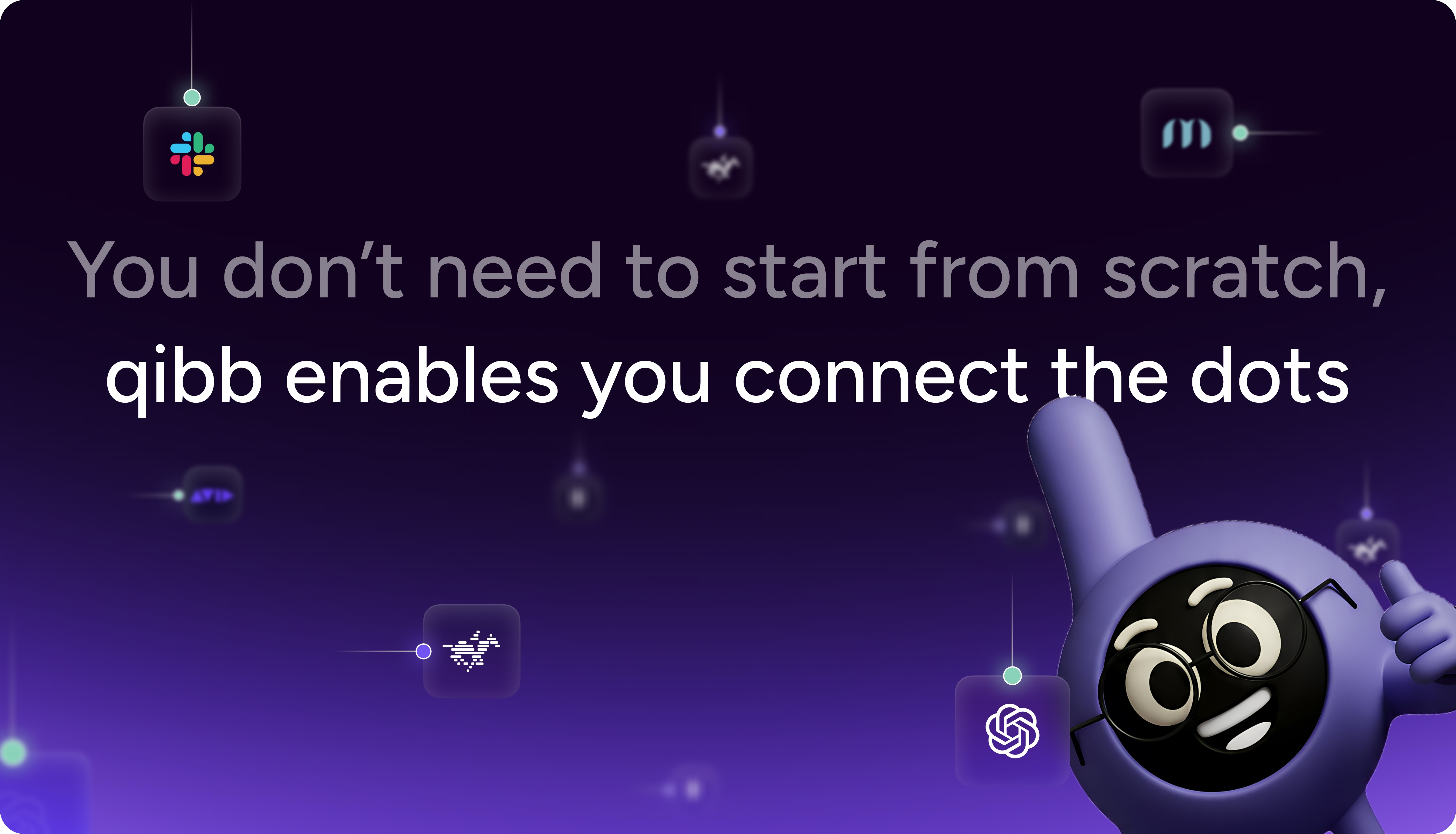How agentic workflows change the game for overstretched media operations in sports
Dear qibb,
Please help. We’re drowning in highlight clipping, tagging, and versioning. Every match day, it’s the same story. We’re scrambling to tag every goal, create custom highlight reels, and publish clips to seven different platforms before excitement fades.
We want to create additional content and publish faster, but we just don’t have the resources right now. Is there any way to scale without burning out our team or going over budget?
Sincerely,
Overwhelmed in Operations
The pressure of real-time content in live sports
Clubs, leagues, and broadcasters across the entire sports ecosystem all wrestle with the same match-day reality: fighting to meet the relentless demands of speed, accuracy, and growing expectations. Where fans expect instant highlights, and missing a beat means missing engagement, revenue, and momentum, the margin for error is razor thin.
What makes it even harder is the need to juggle speed with accuracy, and scale with editorial integrity. A single oversight can damage credibility; a delayed clip can drain impact. Sports media teams need to be able to deliver fast, personalized, multi-platform content without sacrificing quality.
The answer to this isn’t to throw more people at the problem. Sports broadcasters need to build smarter workflows that can keep up with the heat of live competition. That’s exactly where agentic workflows can help.

Understanding agentic workflows
Agentic workflows are emerging as a new operating system for sports media. As intelligent, AI-driven systems, agentic workflows are dynamic, context-aware systems that can think, adapt, and act in the moment, just like a human producer, but at machine speed and scale.
Unlike traditional automation, which works on pre-defined rule-based triggers, agentic workflows bring intelligence and adaptability to the process. Where standard automation might cut a clip every five minutes, regardless of what’s happening in the game, agentic workflows can detect signals of excitement and respond in real time. They can pattern-match signals, like a crowd’s roar, commentator’s excitement, or even when the ball crosses the scoring line, and automatically start generating clips. From there, editorial teams step in to shape the rest: adding tone, story relevance, and cultural nuance.
For sports media, this adaptability is crucial. Live games don’t wait for editors to catch up, and audiences won’t settle for cookie-cutter clips anymore. Agentic workflows orchestrate the process in real time, turning raw footage into personalized, publish-ready content within seconds.
Solving match-day pain points
To see the difference in action, let’s tackle some of the most common challenges that slow down sports media operations, and how agentic AI can address them.
“We spend too much time logging and tagging clips”
One of the most exhausting tasks for media teams is the endless process of logging and tagging. Hours are spent scrubbing through footage, pausing, rewinding, and manually labeling moments in the hope of catching every single basket, home run, or goal. This is slow, error-prone, and drains energy that could be better spent elsewhere.
AI-driven recognition tools already help by flagging moments in real time, but agentic workflows take this further. They don’t just detect scores, penalties, and crowd reactions, they support structuring and prioritization. With automated tagging in place, editors open a ready-made library of accurately labeled clips, freeing them to focus on building stories around the action rather than just documenting it.
“Publishing to different platforms takes forever”
Even once the clips are ready, the next bottleneck hits: formatting and publishing. Each platform demands its own aspect ratio, metadata style, and length, and manually producing seven different versions of the same clip can easily consume more time than the match itself. But formatting is just the surface. The real-time sink comes from tailoring content to context: writing the right caption tone for TikTok vs. LinkedIn, clipping for attention spans on Instagram vs. analysis on YouTube, or localizing subtitles for fans in Spanish, French, or Arabic.
Agentic workflows collapse all of that. They don’t just spit out resized renders. They generate multi-version edits, captions, thumbnails, translations, and even A/B variants in parallel, tuned for each platform’s quirks. A single highlight might become a vertical clip with bold captions for TikTok, a widescreen breakdown with sponsor graphics for YouTube, and short, subtitled bursts for Instagram Stories, all happening automatically in the background. The result? Editors stop burning hours on mechanical repackaging and instead step in at the highest-value moment. Time-to-distribution drops from hours to minutes, and content actually meets audiences where they are.
“We’re missing out on monetization due to lack of speed”
In sports media, speed determines much more than brand visibility and reputation. It directly impacts revenue. When highlights take hours to cut, tag, and publish, valuable monetization windows close fast.
Agentic workflows flip this by producing more clips in less time, multiplying the inventory available for ads and sponsorships. A 20% increase in publishable clips, for example, is also a 20% increase in potential pre-rolls, branded integrations, and sponsorship overlays. More content also fuels ancillary revenue streams, such as behind-the-scenes reels, player spotlights, fan-reaction mashups, or sport-agnostic compilations that keep audiences engaged long after the final whistle.
This acceleration also sharpens dynamic ad insertion (DAI) targetability. Instead of generic placements, advertisers can align with specific, high-emotion moments. More clips created in near real time mean more granular, context-rich surfaces for advertisers, unlocking higher CPMs while giving fans ads that feel relevant rather than intrusive.
What agentic AI unlocks for you
Beyond the challenges that agentic workflows solve, there is also a long list of benefits that sports media teams can leverage to optimize operations, enhance fan experiences, and stay ahead in the live broadcasting space.
Hyper-personalization at scale
Generic highlight reels aren’t cutting it anymore. Fans now demand content that more closely reflects their loyalties, celebrating their favorite players, and even their local language.
With traditional systems, personalization simply isn’t possible as editorial teams don’t have time to manually create dozens of highlight reel variants However, with agentic AI, this is all covered.
As opposed to a ‘one-size-fits-all’ overall game recap, the same game can be automatically re-edited into multiple versions. For example, one highlights the star striker’s performance for their fanbase, another spotlights the underdog team’s big moments, and another focuses on standout defensive plays. Each version can then be localized into different languages or cut into formats suited for casual scroll-by viewers versus diehard supporters. These narrative adjustments to suit different audiences help deepen loyalty and make every fan feel like the content was crafted just for them.
Valuable data handling
Sports already generate mountains of live data, from player tracking and ball speed to advanced xG models, but turning that flood into usable insight in real time is nearly impossible for humans alone. Agentic AI shifts the balance. Rather than merely dumping raw numbers, it proactively tags moments worth attention, enriches clips with auto-generated overlays, and flags subtle shifts that might otherwise slip by. For editors, that means highlights preloaded with context. For commentators, instant access to ready-to-use stats and storylines. For analysts and coaching staff, a clearer view of live performance without sifting through noise.
Take the NFL, for example. The league has taken a huge step in employing further AI features in their workflows to aid stronger sports performances. Now with AI-enhanced sideline surface tablets, coaches and analysts can process real-time game data more efficiently. These tablets help filter strategic plays, analyze formations, and surface play-relevant insights within seconds, all while ensuring that human decision-makers retain control and oversight. This mirrors exactly what agentic workflows aim to achieve: turning high-velocity data into meaningful signals that inform off-the-cuff decision-making.
Streamlined operations
At the heart of it all is the simple truth that match-day operations become dramatically easier. Instead of being buried in repetitive tagging, clipping, syncing, and versioning tasks, your team can rely on the workflows to handle the repetitive tasks in the background. This heightened efficiency leaves room for people to focus on the uniquely human side of storytelling, like deciding which angles to emphasize, shaping the editorial tone, and ensuring the brand’s voice carries through every piece of content.
Striking the balance with AI
The key is knowing what responsibilities to pass over to AI and what to keep human. AI excels at tagging, versioning, syncing data, and clipping highlights. It never gets tired, never loses focus, and thrives on repetitive tasks. Humans, on the other hand, bring judgment, creativity, and sensitivity.
Producers and editors know when a moment requires editorial restraint, when a brand voice needs nuance, and when a story matters beyond the scoreline. By clearly defining responsibilities, media teams get the best of both worlds, benefiting from the speed and scale of automation, paired with the authenticity and oversight only people can provide.
This is where integrated automation platforms like qibb bridge the gap. Agentic workflows can push draft clips, captions, or versions directly into the tools editors already use. With seamless automation, the workflow engine routes these assets to the right people for editorial review and in turn fast approval. Notifications and workflows are orchestrated behind the scenes, so humans only step in when needed, ensuring oversight without losing momentum.
In live sports, you only get one shot. With agentic workflows, you can react to real-time game moments as they happen and orchestrate rapid, multi-platform publishing with minimal human oversight.

Dear Overwhelmed in Operations…
You’re asking the right questions, and that’s half the battle. The truth is, you don’t need to burn out your team or balloon your budget to meet fan expectations. Agentic workflows mean you can finally scale match-day operations without sacrificing quality.
You’ll spend less time clipping goals and more time celebrating them, knowing your content is reaching fans in the right place, at the right moment, with the right context.
And with qibb, you don’t need to rip and replace your existing setup. You just need to start connecting the dots and let agentic workflows do the rest.
Scott Goldman,
US General Manager, qibb

qibb today





